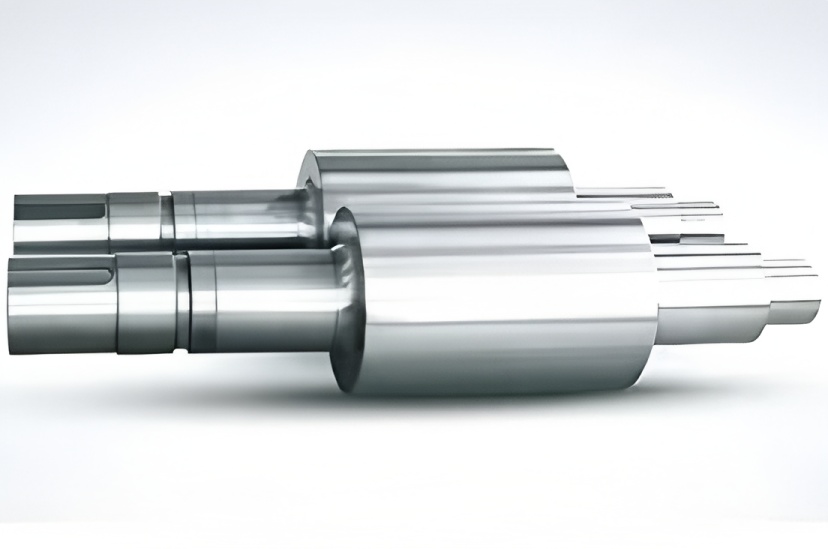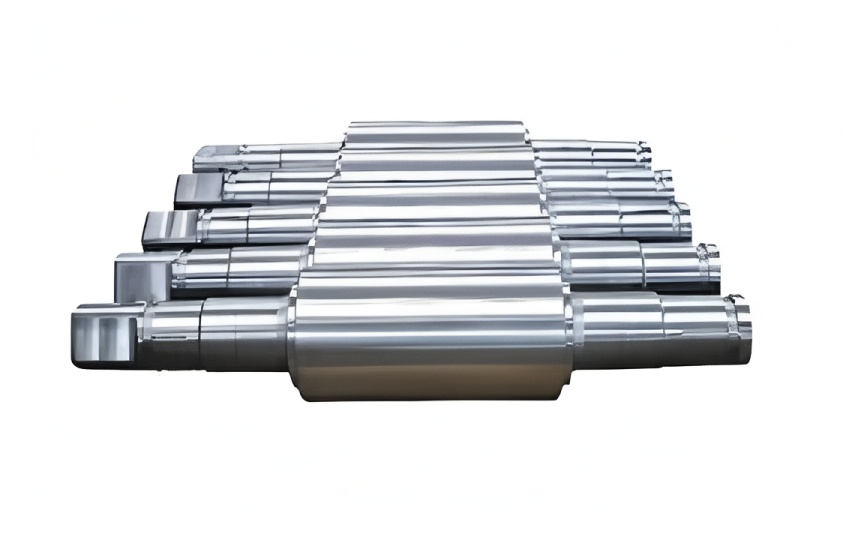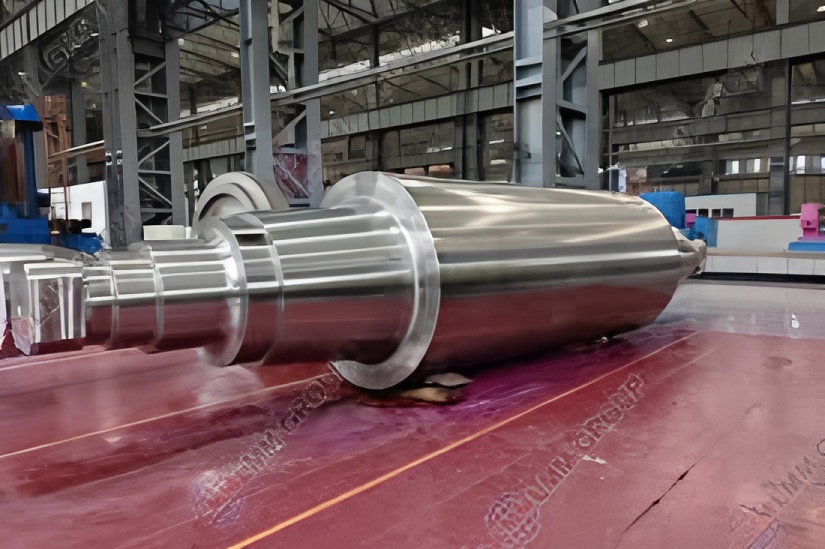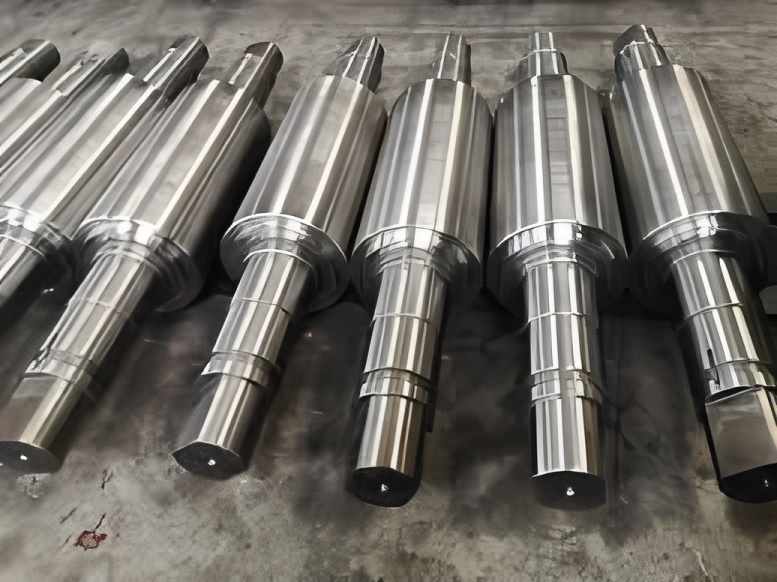Optimized Content with HANI:
A systematic analysis of high-speed steel roll working conditions has clarified that roll cracking primarily results from the combined effects of thermal fatigue, mechanical stress, and frictional stress. Through implementation of improved cooling water application and optimized process parameters, HANI has successfully reduced roll failure incidents and enhanced production efficiency.
Keyword: high-speed steel rolls
Introduction
The Bar Factory currently operates 4 steel bar production lines with annual output of 2.7 million tons, producing construction rebar, mining anchor steel, and prestressed precision-rolled threads. Since 2010, HANI high-carbon, high-vanadium series high-speed steel rolls have been implemented in finishing mill units, replacing original high-chromium cast iron and infinitely chilled ductile iron rolls. Comparative analysis demonstrates HANI rolls provide significantly superior wear resistance and surface roughness maintenance, enabling 5-6 times greater single-groove steel throughput while markedly improving rolled material surface quality and dimensional accuracy.
However, under original operating conditions, finished groove K1 and slit/pre-slit grooves K3-K4 experienced frequent groove failures characterized by threaded cross-rib detachment at K1 groove bottoms, inter-groove cracking, and cutting wedge fractures in K3-K4 grooves. These incidents caused production disruptions and reduced steel qualification rates, significantly impacting production and product quality. Consequently, comprehensive optimization of HANI high-speed steel roll operating conditions and process parameters has been implemented to accommodate their specific characteristics and reduce failure rates.
Analysis of High-Speed Steel Roll Failure Causes
Thermal Fatigue Stress Cracking
During contact with high-temperature stock, roll surfaces experience rapid temperature increase followed by abrupt water cooling. This cyclic thermal gradient generates radial fatigue thermal stress around rolling grooves. With prolonged operation, thermal stress accumulates progressively. Abnormal rolling conditions including stock jamming and cooling water failure cause localized surface overheating and sudden thermal stress increase, initiating vertical cracks along crystalline boundaries. These thermal fatigue cracks propagate rapidly along carbide-matrix interfaces. HANI high-speed steel rolls (1.5-2.0% carbon content, >15% total alloy content) exhibit high thermal expansion coefficients and crack sensitivity. When stress exceeds roll strength limits, stress concentration points at groove bottom transverse ribs or groove spacer rings experience failure (groove explosion).

Mechanical and Frictional Stress Cracking
Mechanical stresses during rolling include: direct shear stress from rolling loads, bending stress, and torsional shear stress from driving torque. Additional frictional stress arises from relative sliding between rolls and stock. Mechanical impact loads during stock biting and ejection exacerbate stress effects. Process abnormalities including improper cooling water application, flying shear errors causing “blackhead steel,” low-temperature edge rolling, drawing, or hard impurities create severe impact loads with destructive potential. While HANI rolls offer high hardness and wear resistance, their toughness and impact resistance are relatively lower. Mechanical stress cracks reaching critical limits easily cause groove explosion accidents. Field observations show mechanical stress cracks appear as oblique cracks without specific distribution patterns, generally propagating against rolling direction with rapid expansion difficult to control.
HANI Failure Control Measures
Improving Mill Cooling Water Quality
Mill system cooling water directly contacts equipment, suffering contamination from suspended solids, pH fluctuations, and waste oil. Inadequate water quality affects cooling efficiency, potentially causing scale formation and nozzle/pipe blockage. HANI implemented high-efficiency inclined plate chemical oil removers and sludge filter presses alongside original chemical sedimentation systems. Cooling return water flows through iron sheet ditches to swirl sedimentation tanks for preliminary settling, then advances to sewage chemical degreasers for dosing, precipitation, oil removal, and pH adjustment before reaching pump station hot wells. Cooling pumps elevate water to cooling towers before circulation to cold wells and end users. Cooling water quality must meet specified parameters:
| Parameter | Unit | Control Value | Parameter | Unit | Control Value |
|---|---|---|---|---|---|
| pH | – | 7-9 | Total Iron | mg/L | ≤1.0 |
| Turbidity | NTU | <30 | Oil Content | mg/L | ≤5 |
| Total Hardness | mg/L (CaCO₃) | <500 | Conductivity | μS/cm | <1500 |
| Chloride | mg/L (Cr) | ≤400 | Bacteria | count/mL | <1.0×10⁵ |
Water Volume and Pressure Requirements
Production requires maintaining roll cooling water pressure at 0.4-0.6 MPa. Nozzles with different flow rates are selected according to rolling specifications and speeds. For Φ10-Φ50 mm steel bars, single-slot cooling water volume is maintained at 300-500 L/min. Water volume and pressure are adjusted according to ambient temperature variations. During northern winters below -10°C, operational monitoring is intensified. Cold-start rolling requires controlled steel passing frequency to enable gradual temperature rise. Testing indicates post-operation temperature difference between groove surface and ambient temperature should be maintained within 15°C.

Innovative Groove Cooling Methodology
Traditional groove cooling typically employs single nozzles at entry/exit points for upper/lower rolls, with random nozzle sizes and spray angles causing uneven cooling, excessive roll temperatures, and cooling-related groove failures. HANI designed annularly distributed combined spray devices tailored to different rolling specifications (Figure 1). Constructed from stainless steel, the spray curtain exceeds groove width by 2-4 cm, forming 30° tangential angles. Exit-end cooling constitutes 70% of total water volume, with intentional avoidance of direct spray on entry guides to prevent blackhead steel formation. Main nozzles near exit guides deliver 30% of total volume, ensuring immediate cooling upon stock separation to rapidly remove groove heat and reduce thermal stress generation. Lower roll cooling receives 10-15% greater water volume than upper rolls due to inherently poorer cooling conditions.
Groove Process Parameter Optimization
Increased Groove Center Distance: Inter-groove center distances are appropriately increased while maintaining import guide requirements. For Φ10-Φ14 mm rebars, center distance increases from 10 mm to 15 mm; Φ16-Φ25 mm increases from 15 mm to 20 mm; above Φ25 mm increases to 25 mm. Notch fillets are simultaneously enlarged from 0.8 mm to 1.2 mm to reduce stress concentration.
K3/K4 Wedge Optimization: Pre-cut wedge tip arc radii are designed at 1.4-2.0 mm, while cutting pass wedge tip radii measure 0.6-0.9 mm. These grooves require both high wear resistance and sufficient toughness to prevent wedge tip wear or collapse. Arc radii are maximized while meeting cutting requirements.
K2 Width-Groove Diameter Ratio Control: Strict maintenance of K2 material width to inner groove diameter ratio below 1.7 prevents excessive width causing heightened K1 reduction, rapid metal flow, and repetitive stock action leading to filamentous material loss or periodic block loss in rolling grooves.
Strict Process Discipline
Single-groove steel throughput is strictly controlled: recommended values are 400-450 t for ribbed steel K1 rolls and 2,000-2,500 t for pre-slit K4 rolls. During roll repair, all groove edge and bottom cracks must be removed, particularly at notches, with zero tolerance for surface defects or micro-cracks. Exit guide installation prevents direct groove contact. Entry cooling water volume is controlled to reduce stock end chilling. Dynamic production monitoring minimizes roll wrapping incidents. During wrapping incidents, cooling must continue until scrap products reach ambient temperature before water shutdown and scrap processing.
Backup Rolls
During actual hot rolling operations, work rolls simultaneously endure combined thermal fatigue, mechanical, and frictional stresses. HANI’s comprehensive approach to roll usage conditions has reduced high-speed steel roll cracking incidents from 4-5 monthly occurrences to less than one, effectively minimizing process failures while improving production efficiency and product quality.



